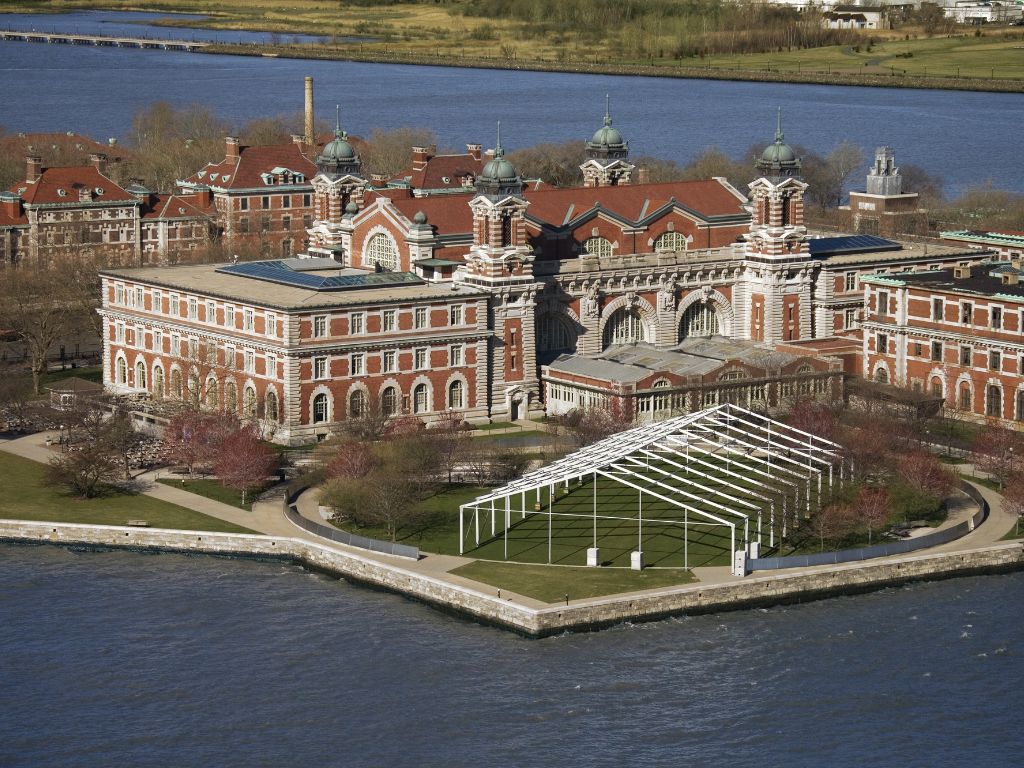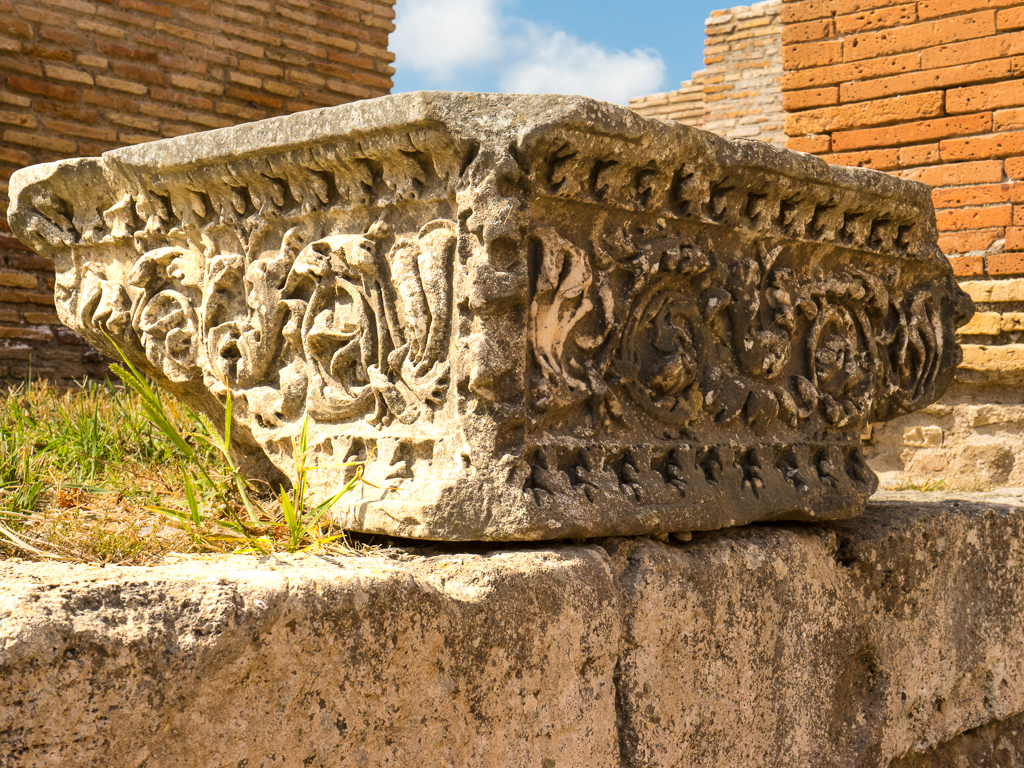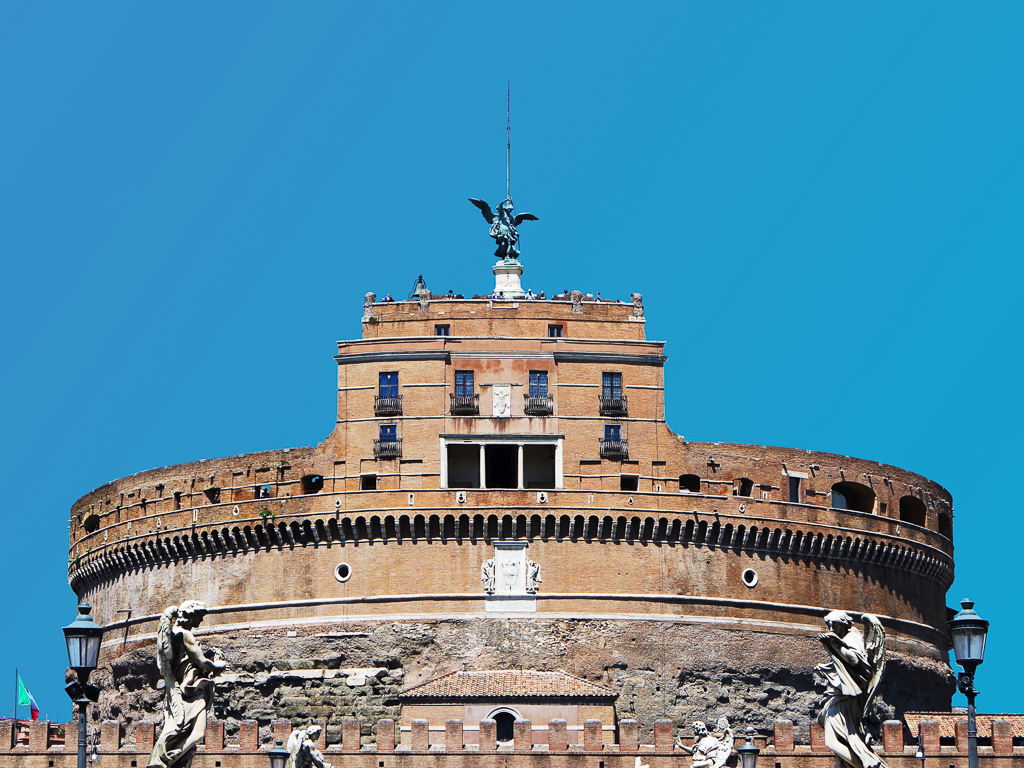Few cities in the world boast a collection of museums as impressive as New York. Whether you’re just looking for something to do on a cold, rainy day or you’re making a pilgramage to view works by your favorite artists, there is something for us all to discover as we roam these historic houses, monumental galleries, and off-the-beaten-path attractions all over the five boroughs.
Context has been operating tours in NYC for 12 years, and we’re continuously surprised by the city’s remarkable museums. We’re walking you through the must-see museums during any trip to the Big Apple, along with several smaller museums which deserve to share the spotlight.
Our Top 5 Must See Museums in NYC
The Metropolitan Museum of Art
The Metropolitan Museum of Art, colloquially known as "the Met," is located in New York City. The museum's collection includes more than two million works of art spanning five thousand years. It is one of the largest and most visited art museums in the world and is among the most prestigious art institutions in the United States.
The Met is composed of 19 diverse art departments, each specializing in a different area, for example, European paintings, Islamic art, or Fashion Design. The museum has a long history that spans from 1872 to today. It was founded by a group of American citizens who were interested in bringing together artistic masterpieces from all over the world to America for public viewing.
Solomon R. Guggenheim Museum
The Guggenheim is a museum of modern and contemporary art. Frank Lloyd Wright, an American architect, designed it. Founded by Solomon R. Guggenheim in 1939 as a museum for twenty-first-century art, the family’s foundation still collects, preserves, and interprets modern and contemporary art. Their staff helps visitors explore diverse ideas across cultures through dynamic curatorial and educational initiatives and collaborations.
The museum houses paintings, sculptures, drawings and other works of art from artists including Pablo Picasso, Henri Matisse and Vincent van Gogh. The museum also has a collection of design objects such as furniture and clothing. It has the world's largest collection of surrealist artworks.
It is one of the most popular tourist attractions in New York City with over 1.6 million visitors annually. The galleries spiral through five floors with over 3,000 square meters (32,000 square feet) of exhibition space which includes paintings by Paul Cézanne and his contemporaries.

Museum of Modern Art (MoMA)
Visiting the MoMa is a great way to spend an afternoon. It is not a cheap experience, but it is worth every penny. The museum offers tours that can last anywhere from an hour to two hours. They also offer audio tours that are available in English, Spanish and Mandarin.
The museum has a great collection of art from different periods and styles. You can see works by Monet, Matisse, Picasso and Warhol among many others. There are also several temporary exhibits throughout the year that showcase contemporary artists from all over the world.
American Museum of Natural History
The American Museum of Natural History is a museum that was founded in 1869. It is one of the world’s largest museums and has over thirty-five million specimens on display. The museum also has exhibits that tell people about the history and diversity of life on Earth.
Brooklyn Museum
The Brooklyn Museum features Egyptian, African and Japanese art in addition to masterpieces from Europe and America. Be sure to check out the Elizabeth A. Sackler Center for Feminist Art, home to Judy Chicago's famous installation The Dinner Party (1974–79).
Established in 1897 by the New York State legislature, the museum has an impressive permanent collection of over 1.5 million works. Not to mention major works by artists like Picasso, Rodin, and Brancusi. With 1,600,000 square feet of space, the museum can display up to 35,000 works at a time. And, it's open seven days a week, except on New Year's Day, Independence Day, Thanksgiving, and Christmas Day.
A Little Bit Further Off the Beaten Track
The National September 11 Memorial Museum
Few places cut through the hustle and bustle of Manhattan like the hush that surrounds America’s September 11th Memorial Museum. Two pools surrounded by names of the fallen take center stage for visitors. But the museum itself is well worth a visit. Hosting artifacts that belonged to folks around the world who perished in those terrible moments, it’s a museum that must be experienced in person.

Whitney Museum of American Art
Imagined by architect Renzo Piano and situated between the NYC High Line and the banks of the Hudson River, the museum’s current building provides more exhibition and programming space, allowing guests to experience the most expansive view ever of its unsurpassed collection of modern and contemporary American art. Their focus on collecting works by living American artists has supported their flagship exhibition, the Biennial, which is the country’s leading survey of the most recent developments in American art.
The Whitney relocated to the Meatpacking District in 2015, and impresses visitors not only with it’s priceless collections, but with its terraces which overlook the city’s skyline. After you’ve enjoyed a tour of the Whitney, we encourage you to join a Context Tour of the NYC Highline.
Morgan Library & Museum
The Morgan Library & Museum is a great place to learn about art and history. Their collection of prints and rare books is nearly unparalleled. The museum's holdings include over 100,000 books printed before 1851 (including an incunabulum edition of the Gutenberg Bible), more than 10,000 manuscripts including important Renaissance works such as Michelangelo's Notebook on Human Proportions, thousands of prints and drawings; hundreds of pamphlets; an extensive collection of photographs including portraits by Rembrandt van Rijn and Jean-Auguste Ingres; several thousand graphic arts objects from antiquity to today; a growing number of digital assets that continue to enrich our visual resources in support of education and research activities for all ages.
The Morgan Library & Museum is composed of several structures: The main building was designed by Charles McKim (of the firm McKim, Mead & White) with an annex designed by Benjamin Wistar Morris; a 19th-century Italianate brownstone house at 231 Madison Avenue built by Isaac Newton Phelps Jr.; a glass entrance building designed by Renzo Piano & Beyer Blinder Belle opened in 2007 -2008 which connects the original library building with its annex across 38th Street via underground passageways; this section was originally part of another 19th-century Italianate brownstone home but was demolished when they were constructing their own facility next door - Jefferson Market Courthouse which now serves as administrative offices for City Hall).
Met Museum Cloisters
Miles above their flagship location on Fifth avenue, sits a treasure of medieval art and architecture which has stood the test of time. For centuries, cloisters have presented a quiet venue for rest and reflection and those in NYC are no different – a respite from the hustle of the city. Construction on the current facility began in 1933 at the northern edge of Fort Tyron Park.
The Met Museum’s Cloister are home to the Unicorn Tapestries and other woven masterpieces which provide critical context clues about life during the Middle Ages To visitors who only have a few days, trekking to Upper Manhattan feels very far away. But roaming the tranquil courtyards and galleries provides a relaxing step back in time, which frees our imaginations to better understand the works we’ll experience. And the best part? Admission is free with your Met Museum ticket from Museum Mile.
Cooper Hewitt, Smithsonian Design Museum
Cooper Hewitt is a Smithsonian museum, housed within the Andrew Carnegie Mansion on the Upper East Side. It's dedicated to design, craft and the applied arts. The museum was founded in 1896 as the Cooper Union Museum of Decorative Arts and Design. Three granddaughters of Peter Cooper served as co-directors until 1930. In 1967, it was taken over by the Smithsonian Institution with plans for expansion into an American Crafts Museum. It reopened in 1976 as part of that larger institution
The Jewish Museum
The Jewish Museum of NYC is too often overshadowed by its neighbors on Museum Mile. It was the first Jewish museum established formally in the United States and is also distinguished as the oldest existing Jewish museum in the world. Its galleries contain the largest collection of art and Jewish culture excluding Israeli museums, and its staff care for more than 30,000 objects. The museum first opened to the public in 1947, but the collection's origin story dates back to 1904, with a gift of Jewish ceremonial art objects from Judge Mayer Sulzberger to the Jewish Theological Seminary of America.
Ellis Island National Museum of Immigration
From a single port in Lower Manhattan you can board a ferry that connects travelers to Ellis Island and the Statue of Liberty. While many visitors dream of climbing the steps of Lady Liberty, spending time at Ellis Island is just as invigorating.
Join our Freedom Tour as we take a closer look at the halls which welcomed over 12 million Americans between 1892 and 1924. You’ll learn more about what the process was like, from less glamorous elements such as health inspections to the heartwarming stories of families reunited after months apart.

Smaller Museums that tell Important Stories About History
Tenement Museum, founded in 1988 by social activist Anita Jacobson and historian Ruth Abram, is located in the Lower East Side of Manhattan, near Chinatown. Its founders rehabilitated the apartments that dozens of families called home between the 1860s and 1930s. The lower east side had been a central hub for immigrants to build their new lives here in America. Many tenements were built during this time period with little regard to fire codes or health standards laws -- which led to many deaths related to overcrowding over time because people from all over Europe moved there looking for work opportunities.
The Museo del Barrio, located in East Harlem, an area that’s long been home to many Puerto Ricans. Established in 1969 and housed in a beautiful building designed by architect Rafael Carmoega, this museum has a permanent collection of more than 5,000 works that include paintings, sculptures and multimedia pieces by artists from Puerto Rico and Latin America. The museum also has an extensive library with archives about Latino history and culture. Museo del Barrio’s current exhibit is “To Become: New Contemporary Art From Puerto Rico,” featuring work by artists such as Willy Chirino and Edwin Soto
Chelsea Galleries is a group of art galleries in Chelsea, Manhattan, New York City. It is one of the most important art districts in the world and home to over 130 galleries, many of them located in former industrial buildings along Manhattan's West Side. With its roots as an artists' colony dating back to the 1850s, Chelsea has long been known for its culture and progressive politics. In recent decades it has become famous for its vibrant nightlife that caters to young professionals who live within walking distance from their favorite bars and clubs.
The Rubin Museum of Art is a unique space that hosts one of the largest collections of Himalayan art in the world. Founded by philanthropist Donald Saff, it’s also dedicated to preserving Tibetan culture. The permanent collection at The Rubin Museum has over 7,000 pieces, including sculptures and paintings from ancient dynasties like China and India. There are also rotating exhibitions on show at all times for visitors to experience something new when they visit. The museum cafe serves light bites and beverages from around the world along with a selection of wines from France, Italy and California – perfect for a leisurely afternoon after exploring this gem!
Alexander Hamilton, one of the founding fathers of the United States, was born in Nevis but called New York City his home. Hamilton Grange National Memorial, at 141st street, is dedicated to honoring his life and work.
Alexander Hamilton was an orphan who grew up on St. Croix in the British West Indies. In 1772, at age 13, he was sent to New York City to live with Scottish immigrants who would be his guardians until he became an adult. He attended King's College (now Columbia University) and then studied law under John Jay—who later became Chief Justice of New York State—and Robert Troup. After receiving his degree from King's College in 1782, Alexander Hamilton returned home as a war hero. Our Hamilton in NYC Walking Tour explores several landmark destinations which were critical to the revolutionary war.
The Museum of the City of New York, also known as MCNY, has been around since 1923 and is located in New York City's Upper East Side. It houses thousands of exhibits that focus on the city's history and culture, including artworks from its permanent collection. The museum is open on Wednesdays and weekends only; tickets are $12 for adults (ages 13+) with discounts available for seniors, students, children, and college students with valid ID.
The MCNY has a wide array of galleries showcasing its permanent collection as well as rotating special exhibitions that change every few months or so. You'll find everything from paintings to photographs to sculptures chronicling life within the five boroughs throughout time—from early European settlers right up through modern-day Manhattanites.
Context Travel leads a Food Tour of Chinatown, and while you’re in the area the Museum of Chinese in America (MOCA) galleries are the perfect place to gain even more Context about the historic legacy of Chinese culture in America – and particularly to the New York City area. Their doors first opened in 1980 and then suffered a terrible fire in 2020, which damaged much of its collection. After extensive repairs, we’re excited to say that they have reopened to visitors. Their staff is dedicated to promoting an authentic understanding of the Chinese American experience. Through exhibitions, educational services, and public programs, we can all learn from a trip to this museum.
Just steps from the suits and ties of Wall Street is a remarkable museum dedicated to the stories of the continent's indigenous cultures and the repatriation of its artifacts. The museum has three facilities, but it’s well worth a visit to the NYC branch, located in our nation’s first customs house on Bowling Green in lower Manhattan.
You may be familiar with The National Museum of the American Indian on the National Mall in Washington, D.C., which opened on September 21, 2004. But we also suggest exploring The George Gustav Heye Center, a permanent museum – located at the Alexander Hamilton U.S. Custom House in New York City. The Cultural Resources Center, a research and collections facility, is located in Suitland, Maryland. The foundations for the present collections were first assembled in the former Museum of the American Indian in New York City, which was established in 1916, and became part of the Smithsonian in 1989.
The New York Transit Museum located in the decommissioned Court Street Station in Downtown Brooklyn is a non-profit organization dedicated to preserving and presenting the history of public transportation in New York City. The museum has a collection of over 1,000 objects that span from the early days of elevated trains to present-day subway cars.
In addition to its permanent collection, there are also rotating exhibits on display at all times. Visitors can explore everything from historic subway cars like Peter Witts or R1/9s to photographs taken by famed photographer Walter Rosenblum during his time with The Rapid Transit Railroad Photographic Survey.
Ready to Plan Your Trip to NYC?
Join our upcoming online conversations to explore museums virtually with local experts.













